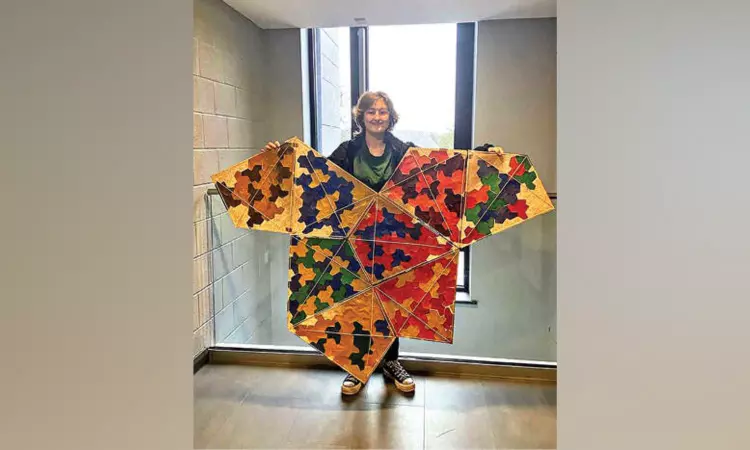Fun with fractals: Shapeshifter: What can you do with an einstein?
David Smith, a shape hobbyist in England who made the original discovery and investigated it with three collaborators possessing mathematical and computational expertise, nicknamed it “the hat.”

NEW YORK: It’s been a year of endless einsteins. In March, a troupe of mathematical tilers announced that they had discovered an “aperiodic monotile,” a shape that can tile an infinite flat surface in a pattern that does not repeat — “einstein” is the geometric term of art for this entity.
David Smith, a shape hobbyist in England who made the original discovery and investigated it with three collaborators possessing mathematical and computational expertise, nicknamed it “the hat.” (The hat tiling allows for reflections: the hatshaped tile and its mirror image.) Now, the results are in from a contest run by the National Museum of Mathematics in New York and the United Kingdom Mathematics Trust in London, which asked members of the public for their most creative renditions of an einstein.
A panel of judges assessed 245 submissions from 32 countries. Three winners were chosen, and, on Tuesday, there will be a ceremony at the House of Commons in London. (Each winner receives an award of 5,000 British pounds; nine finalists receive 1,000 pounds.) Among the judges was Smith, who said in an email that he was “captivated by the diversity and high standard of all the entrants.”
For the finalist William Fry, 12, of New York, the answer was: Play Tetris, of course! He named his monotile variant of the game Montris. (Another entrant had a similar idea, called Hatris.) His sister, Leslie Fry, 14, received an honourable mention for a collage inspired by Paddington Bear and his famous red hat. Evan Brock, 31, an exhibit designer in Toronto, took one of the three top prizes with his hat ravioli.
Prepared with bespoke wood molds, it promises “a more geometric dining experience,” his submission notes. Stuffed with potato-and-onion filling, Brock’s ravioli are made from yellow (turmeric), orange (carrot) and red (beet) doughs for unreflected hat tiles; and green (spinach) dough for reflected tiles. Other edible entries included hat cakes and hat cookies, hat sandwiches and hat dosas.
“But these ravioli made us laugh,” Chaim Goodman-Strauss, one of Smith’s collaborators, a judge and an outreach mathematician at the National Museum of Mathematics, said in an email. “They look so tasty, too.” The finalist Sy Chen, 61, an origami artist in Rockville, Md., folded origami hat tiles from one-dollar bills without cutting.
As Dr. Goodman-Strauss observed: “This origami construction shows unreflected hat tiles — and the reflected tiles by their absence!” Another, classical approach involved more than 1,500 handmade ceramic tiles, assembled into a 24-foot frieze to decorate the storefront of a ceramics workshop.
It was designed by the finalist Garnet Frost, 70, of London, a visual artist who has an interest in architectural ornament (he is the subject of the documentary “Garnet’s Gold”), and the Alhambra Tiling Project, an educational nonprofit in the U.K., with the ceramist Matthew Taylor and community volunteers. Julien Weiner, 17, of New Orleans, summoned a computer-generated einsteinian succulent. “Humans ‘invent’ a new shape in the same way Sir Isaac Newton ‘invented’ gravity,” he said. “An aperiodic monotile was always there.
My submission, titled The Einstein Bulb, imagines how, just as being unaware of gravity didn’t stop us from taking in the majesty of the moon rising in the night sky, the hat could exist in nature just waiting to be discovered and explored.”



